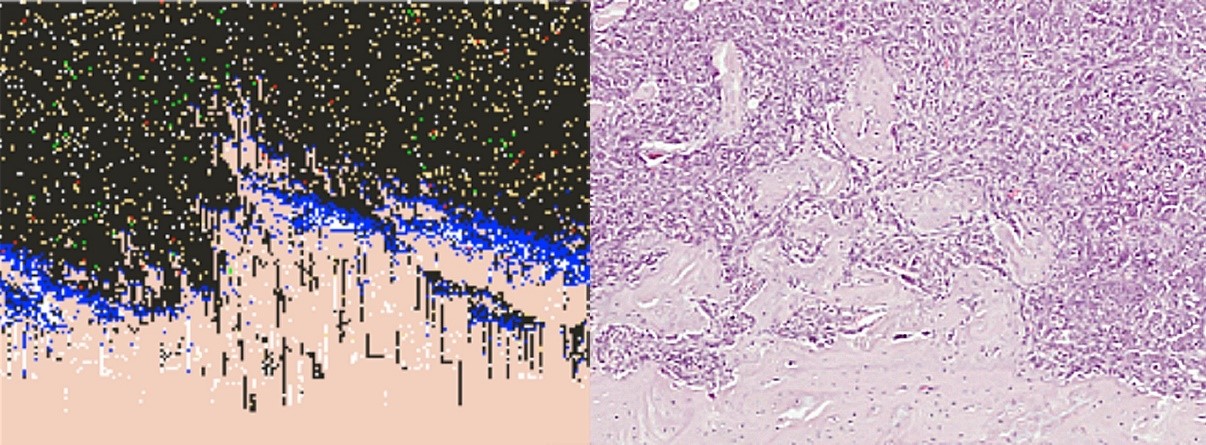Prostate Cancer
Deconvoluting the Complexity of Bone Metastatic Prostate Cancer via Computational Modeling



Posted January 3, 2019
Arturo Araujo, Ph.D., H. Lee Moffitt Cancer & Research Institute

Metastasis of prostate cancer to the bone presents patients with a poor prognosis, with a 5-year survival rate of approximately 28%. While new therapeutic strategies are urgently needed for these patients, part of successfully translating new therapies into the clinic is determining the optimal approach and timing for delivering the therapy to provide maximum benefit for patients and accelerate FDA-approval. Testing these parameters through extensive experimentation can be expensive and time consuming, so Dr. Arturo Araujo at the H. Lee Moffitt Cancer & Research Institute sought to overcome this limitation by using computational modeling to integrate biological and clinical data and accelerate translation of targeted therapies into the clinic.
With the support from a FY14 Postdoctoral Training Award, Dr. Araujo and his mentor Dr. David Basanta developed a discrete continuum hybrid cellular automaton (HCA) model that can dissect the interactions between the tumor cells and the bone microenvironment and predict the multiple effects of manipulating these factors to alleviate the disease burden. This provides a realistic computational simulation of how prostate cancer interacts with the healthy bone, which could help predict the effects of introducing new therapies targeting this metastatic bone environment.
Using methods similar to weather forecasting, the team used their HCA model to successfully predict the complex response of the metastatic disease to a new TGFβ inhibitor treatment in vivo. Their in-silico results from this study show that, applied prior to tumor seeding, TGFβ inhibition directly impacts prostate cancer cell viability. Additionally, this inhibition simultaneously restricts bone-destroying osteoclast formation and unexpectedly promotes bone-building osteoblast growth, leading to a positive side effect of extra bone deposition. These research findings point to a "sweet-spot” of 80% TGFβ inhibition to provide maximum therapeutic benefit and minimal side effects, which was validated in vivo by their biological collaborators Dr. Leah Cook and Dr. Conor Lynch.
Through the use of computational modeling, Dr. Araujo and his research team were able to effectively compress a decade of research into a two year project, expediting the drug discovery process and saving time, resources, and mice. They are currently tailoring their model more specifically to patients and working to predict the optimal sequence of treatments. Once validated, this could become a useful tool to assist clinicians and patients in their decision making process and rapidly translate new therapeutics into the clinic for men with metastatic prostate cancer.

Computational model of the prostate cancer to bone metastasis- The simulation (left) shows prostate cancer cells (black) interacting with bone (pink) and the bone-resident cells: mesenchymal stem cells (yellow), bone-building osteoblasts (green, blue) and bone-resorpting osteoclasts (red); with predictions validated in-vivo, including the physical insults to the bone (right) and the phasic changes in the bone-resident cells. The model can be parametrized with patient-specific conditions for individualized predictions; a tool that will aid the clinical oncologist and patients to make treatment decisions.
Publications:
Araujo, A., Cook, L. M., Lynch, C. C., & Basanta, D. 2018. Size Matters: Metastatic Cluster Size and Stromal Recruitment in the Establishment of Successful Prostate Cancer to Bone Metastases. Bulletin of Mathematical Biology.
Cook, L. M., Araujo, A.., Pow-Sang, J. M., et al. 2016. Predictive computational modeling to define effective treatment strategies for bone metastatic prostate cancer. Scientific reports.
Araujo, A. & Bastanta D. 2016 Hybrid Discrete-Continuum Cellular Automaton (HCA) model of Prostate to Bone Metastasis. bioRxiv.
Link:
Deconvoluting the Complexity of Bone Metastatic Prostate Cancer via Computational Modeling
Last updated Friday, March 7, 2025














